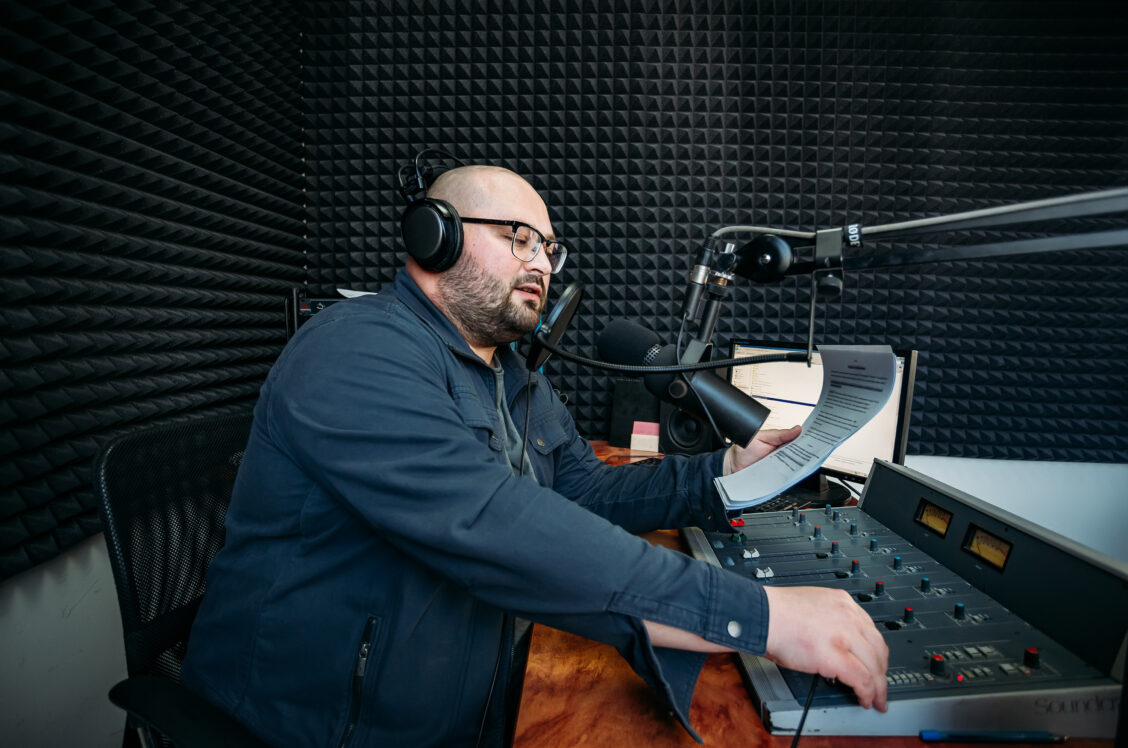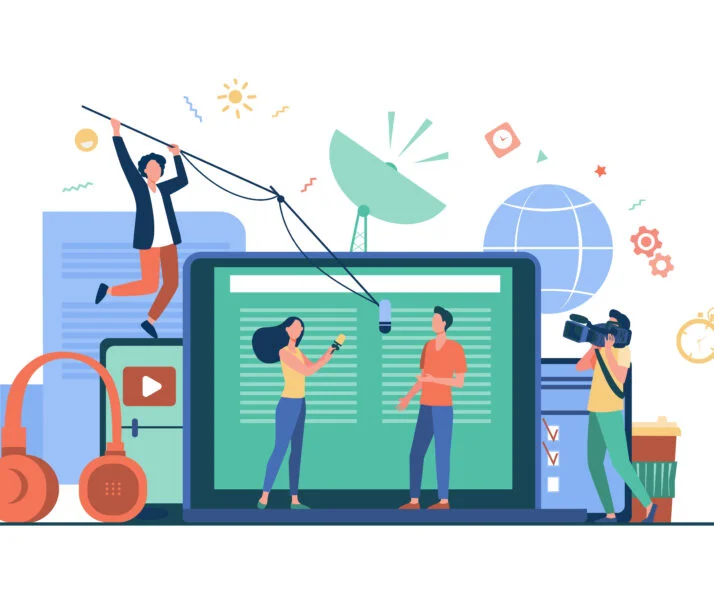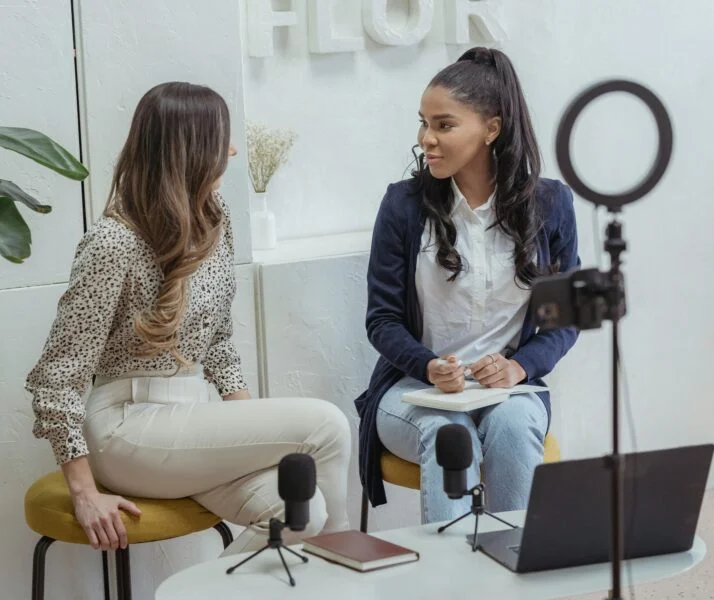
While advertisers have shifted their focus to streaming audio and podcasts, radio advertising remains a powerhouse with a huge footprint and audience reach. In fact, AM/FM radio dominates ad-supported listening nearly everywhere—at home (45%), work (52%), and in the car (85%). Radio advertising costs also remain flexible, making this channel an ideal integration into any funnel.
In this article, we’ll cover how much radio ads cost, with consideration to different factors such as duration, market, time, and prestige.
How Much Do Radio Ads Cost?
Radio ads are sold by the cost per 1,000 listener impressions (CPM) or cost per point (CPP).
Costs are influenced by a number of factors, including the size of the audience, listener demographics, time of day, whether the ads are sponsored, talent notoriety, the market where the ads will run, and the ad length. Events such as national elections can also impact the going rate.
In some markets, it’s possible to buy advertising slots for considerably less than $200, while national radio spots could become more costly. Prices vary considerably, and every brand must consider investigating its own priorities and the potential ROI of every radio investment.
How Are Radio Ad Costs Calculated?
The cost of radio ads are typically calculated as CPM (cost per mille—AKA, the cost per 1,000 impressions) or CPP (cost per point—the cost of advertising exposure that equals one rating point or 1% of the population in any given market). As audio advertising becomes more sophisticated and digital, many radio stations are increasingly selling inventory on a CPM basis.
CPMs are calculated by the total cost of the advertising campaign, divided by the total number of listener impressions, then multiplied by 1,000.
Similarly, CPPs are based on rating points, which are derivatives of CPM but take into account the total population of a given geographic market. CPPs are calculated by dividing the cost of the ad campaign by the gross rating point (GRP), which measures penetration of the radio ad within a given market.
Both CPMs and CPPs can cost anywhere from a few dollars to thousands of dollars; cost is determined by the inventory and campaign parameters.
How Much Does a 60-Second Radio Ad Cost?
The cost of individual 60-second radio ads averages from $5 to $750.
The price point of a 60-second ad varies tremendously due to factors mentioned above, including market size, demographics, time of day (for example, the hours when most people are commuting to or from work are pricier than other times), the market where the ad is running, and other circumstantial factors, including whether or not it is run during high-volume listening times, for example during election season. Remnant opportunities—that is, unsold advertising slots offered at a discount—are included in the price range above. These are typically the least expensive type of radio ads, but don’t guarantee specific requested placements (such as time of day).
How Much Does a 30-Second Radio Ad Cost?
A national or local 30-second radio ad’s CPP (that is, the cost of one rating point, or 1% of the population in the market the brand is targeting) costs on average, $3 to $525. In general, brands can expect to pay 60 to 70% of the cost of a 60-second ad (for 60-seconds, the price averages $5 to $750). The rates, of course, will vary across small, mid-size, and large markets, with cost fluctuations based on time of day.
Brands investing in 30-second radio ads should plan against KPIs that include engagement and brand recall, which are two areas where 30-second ads tend to outperform other lengths. Thirty-second spots are ideal for businesses investing in sponsored advertising, since shorter ad spots do not leave much room for creativity and information. In fact, with endorsed radio, businesses may even opt to invest in a 60-second ad to optimize the benefits and allow the host to tell their story.
How Much Does a 15-Second Radio Ad Cost?
The cost of a national or local 15-second radio ad typically costs between $1.80 and $315. In general, brands can anticipate paying 60% of the cost of a 30-second ad (for 30-second ads, the costs are typically between $3 and $525). Across markets, seasons, and time of day, the cost will vary.
Fifteen-second radio spots are ideal for brands on a budget—though there is a danger that the messages get lost due to their brevity. These spots tend to perform best for brands that want to quickly explain the features of a new product or as to share a “reminder” that is part of a larger audio strategy. Length considerations highly depend on the product and CTA included in the spot, so working with an agency that is well-versed in strategy can improve the efficacy of radio advertising.
How Much Do Radio Ads Cost Per Month?
The monthly cost of a radio ad campaign will vary based on ad length, market size, station popularity, ad frequency, time of day, audience demographics, and seasonality. When considering the monthly budget to earmark for radio, brands must consider these factors, as well as their campaign goals. Generally, radio advertising opportunities are available to meet most monthly budgets. Working with a specialized agency can help secure the best placements at the best prices.
Radio Advertising Rates [2025]
Many factors affect radio advertising rates. In addition to the market, length, time of day, and other variables discussed in greater depth below, brands must consider inclusions such as the music, voice actors, and editing. Luckily, radio ad pricing is largely stable and can be easily and predictably integrated into long-term media planning.
Local radio advertising rates by market [2025]
Local radio advertising offers several benefits for brands, including general convenience for listeners—who don’t have to do anything to listen to their favorite stations aside from turning on their radios. For businesses hoping to connect with older demographics or targeting local populations, traditional radio can also pay dividends. To get a sense of average cost of a 30-second ad in different markets, we’ve created a chart below, broken down by state. Keep in mind that pricing is based on numerous elements including age, gender, and daypart, and that in addition to these averages, both lower- and higher-cost opportunities exist (for example, remnant radio opportunities will be more affordable, while long-form, host-endorsed ads will incur a higher cost).
Here are typical local radio ad costs in the 15 largest US radio markets:
| Market | Population | CPM of a 30-Second Radio Ad | Avg. Cost of a 60-Second Radio Ad |
| New York | 16,600,600 | $9-25 | $795.15 |
| Los Angeles | 11,297,500 | $13-32 | $277.84 |
| Chicago | 8,034,800 | $10-28 | $361.25 |
| Dallas-Ft. Worth | 6,862,600 | $10-25 | $110.14 |
| San Francisco | 6,609,300 | $10-28 | $239.86 |
| Houston-Galveston | 6,417,100 | $11-30 | $132.77 |
| Atlanta | 5,285,800 | $12-27 | $288.12 |
| Washington, DC | 5,161,600 | $10-26 | $519.37 |
| Philadelphia | 4,805,000 | $12-27 | $500.55 |
| Boston | 4,433,200 | $13-29 | $1,168.60 |
| Miami-Ft. Lauderdale | 4,136,100 | $13-27 | $90.77 |
| Seattle-Tacoma | 4,136,000 | $12-28 | $600.00 |
| Phoenix | 3,986,000 | $13-35 | $236.61 |
| Detroit | 3,899,200 | $18-34 | $503.38 |
| Minneapolis-St. Paul | 3,126,799 | $12-31 | $300.13 |
Streaming Radio Advertising Rates by Platform [2025]
Streaming radio offers benefits that differ from local radio, including more precise targeting with additional parameters beyond age and location, allowing brands to reach the right people, with the right message, at the right time. Streaming radio platforms include Spotify, Audacy, WOO, Pandora, ESPN, and iHeartRadio.
| Platform | Minimum Ad Spend (monthly) |
| Spotify | $25,000 |
| Audacy | $10,000 |
| WWO | $10,000 |
| ESPN | $10,000 |
| Pandora | $25,000 |
| iHeartRadio | No minimum |
Factors That Influence Radio Advertising Costs
Since radio advertising comes in many forms, many factors influence the total cost of a campaign on local or streaming radio. The time of day, program popularity, ad length, and more contribute to the total cost. Brands need to assess their needs and goals to launch campaigns that can deliver results.
Factors that influence radio advertising costs include audience size, listener demographics, time of day, ad duration, station or show influence, and more.
Audience Size
The number of people reached by a radio show or station impacts ad prices. In general, the greater the reach, the higher the cost. This is why national radio ad campaigns, for example, will incur a higher price tag than regional or hyper-local radio.
Since radio has a broad audience, brands have the opportunity to connect with a diverse range of listeners to amplify brand awareness.
Listener Demographics
A station or show that demonstrably connects with a specific audience can command higher rates. For example, political ads are well-matched to talk radio and news-centered segments, which increases their price.
Time of Day
Morning and evening are considered peak radio advertising hours, since these align with when the most listeners tune into the radio. As a result, these hours are more expensive because they have higher listener engagement. Alternatively, late-night and overnight slots tend to be cheaper because they have considerably less reach.
Ad Duration
Ad duration impacts the total cost of the ad campaign. For example, 60- and 30-second radio ads, especially endorsed ads, will be priced higher than 15-second ads, since more airtime is required to convey the message.
When budgeting, brands must carefully consider their goals for the campaign and how radio time plays into their broader media mix.
Station or Show Influence
Some shows and stations have higher listenership and audience engagement due to their personalities. A show or station can add credibility to your business and drive trust, providing overall brand lift and conversions. Endorsed ads by particular hosts, or airtime during specific shows or on high-impact stations, can increase the cost of schedules or individual ad slots.
Other Factors
Other factors impacting the cost of radio advertising include whether the ad is produced or host-read. Endorsed ads tend to drive a higher price because they leverage the strong audience relationships of individual radio hosts.
Another important consideration is the time of the year when ads run, especially with consideration to election seasons. Radio stations are mandated to give political candidates the lowest rates, so while well-connected agencies can often get bonus inventory for their clients for free or at very low rates, that doesn’t happen during election seasons.
Is Radio Advertising Worth It In 2025?
Radio advertising remains as relevant and cost effective for brands as ever. Radio is flexible and immediate, reaching huge portions of the population (about 85% of adults in the U.S. tune in weekly), with listenership expected to increase by as much as 10% in 2025. What’s more, radio can connect with targeted audiences on the go. This reach and impact make radio—local, national, and streaming—a highly influential medium to keep your brand top of mind with messages delivered at a cadence that encourages audiences to take action. Since radio captures 69% of all listening time spent with ad-supported audio, opportunities for brands abound.
Radio remains a centerpiece of audio advertising and a critical piece of your brand’s advertising mix. ARM specializes in audio, which means we have all the knowledge, expertise, and connections to ensure that your next radio campaign produces the results you’re after.


